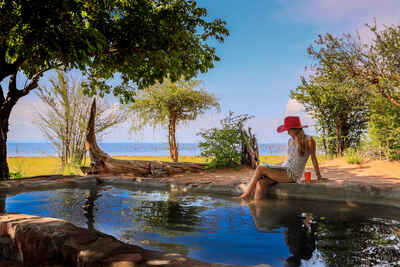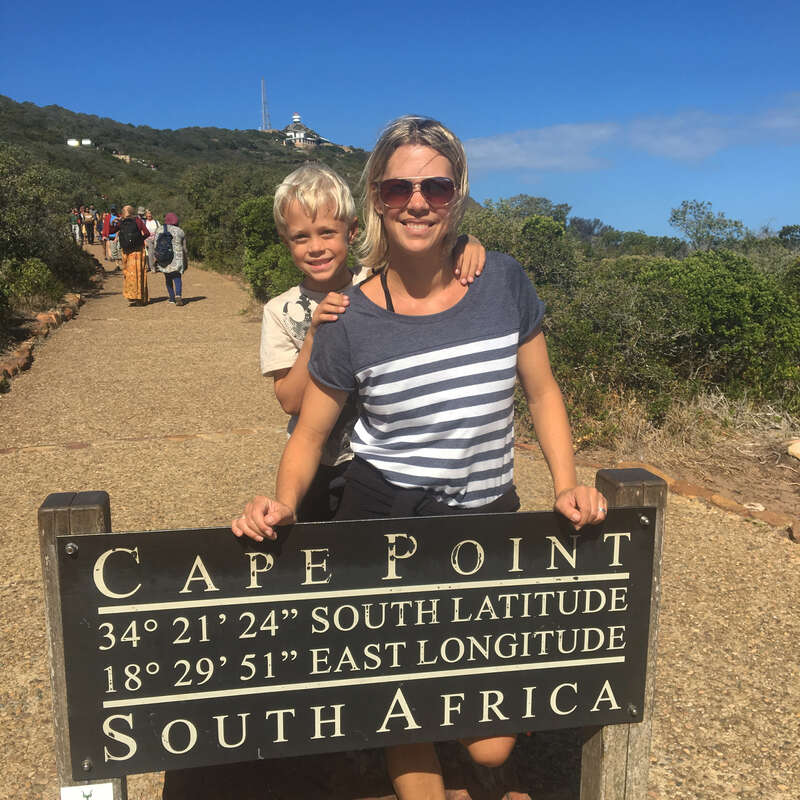About Rhino Safari Camp
Rhino Safari Camp is a rustic property set on Muuyu Island in Zimbabwe’s Matusadona National Park, a stretch ...
... of land that typically becomes a peninsula during times of low water. The camp acts as a base for walks, drives and water-based activities, and provides one of the best locations from which to explore the national park.
Rhino Safari Camp feels remote and rustic, and will suit travellers looking for a more traditional safari experience. The expanse of water all around differentiates it from many safari camps – but more unusual still is it's old-style Zimbabwean ethos: run by a committed team it's all about serious wildlife and good guides, with no time for modern 'safari chic'. We found that the warm hospitality, high-quality guiding and good game-viewing made for a really authentic safari.
Our view
Rhino Safari Camp feels remote and rustic, and will suit travellers looking for a more traditional safari experience. The expanse of water all around differentiates it from many safari camps – but more unusual still is it's old-style Zimbabwean ethos: run by a committed team it's all about serious wildlife and good guides, with no time for modern 'safari chic'. We found that the warm hospitality, high-quality guiding and good game-viewing made for a really authentic safari.
Accommodation
7 chalets
Children
Best for 16+
Open
All year
Activities

4WD Safari

Birdwatching

Boat trip

Fishing

Guided walking safari

Private activities
Traveller reviews of Rhino Safari Camp
5 real, un-edited reviews from Expert Africa's travellers.
Arrived 26 Sep 2015, 3 nights
"Disappointing Camp but great birding"
Overall rating: Good
Arrived 12 Sep 2015, 3 nights
"A Great Safari Camp"
Overall rating: Good
Arrived 10 Oct 2014, 2 nights
"Basic but charming."
Overall rating: Excellent
Arrived 25 Jul 2014, 4 nights
"Rhino Safari Camp review"
Overall rating: Good
Arrived 28 Jul 2012, 3 nights
"Tracking the black rhino on foot"
Overall rating: Excellent
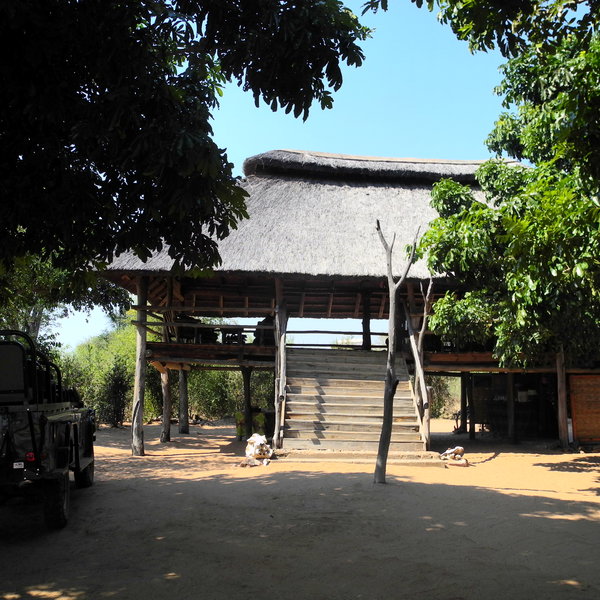
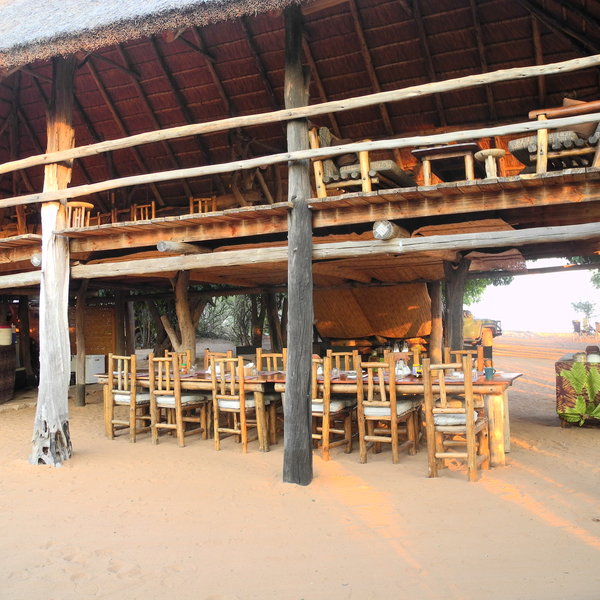
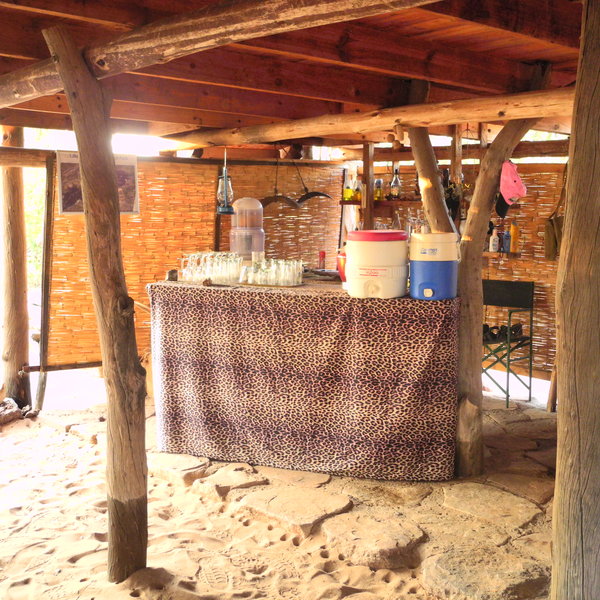
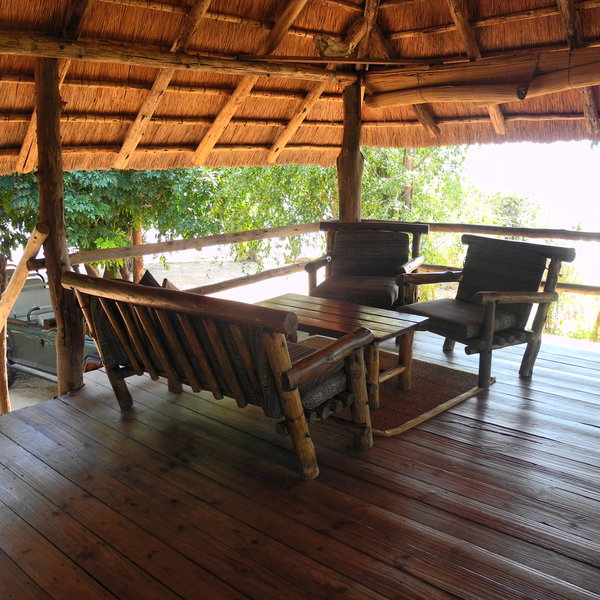
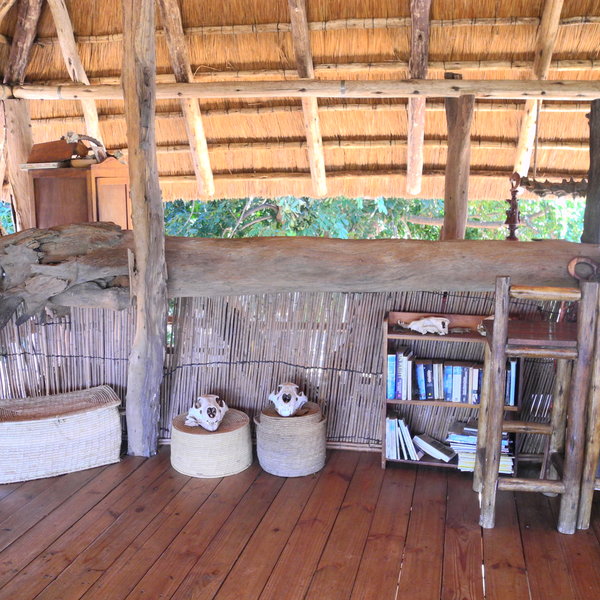
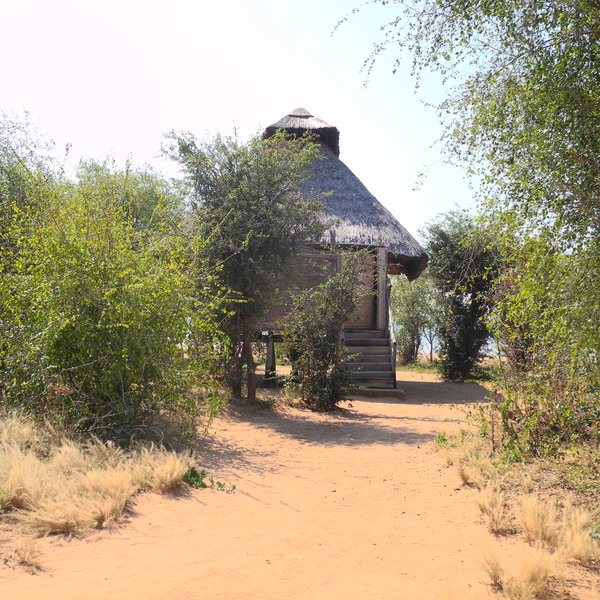
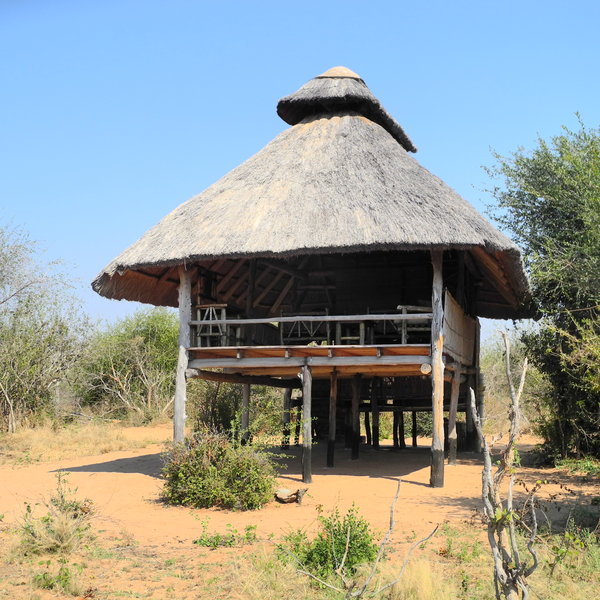
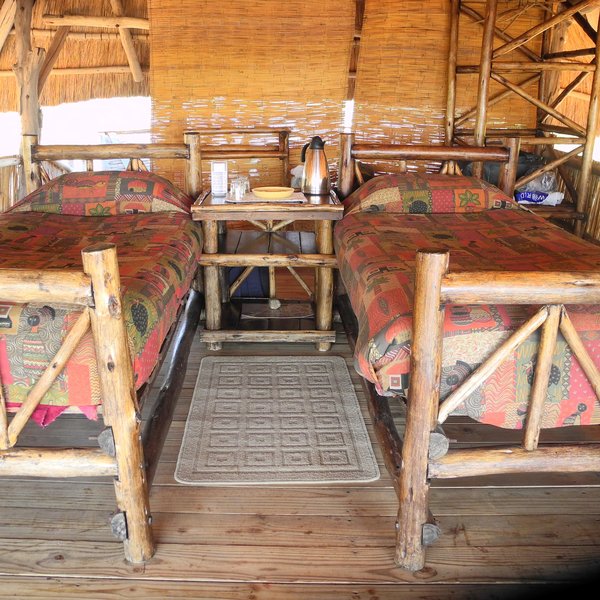
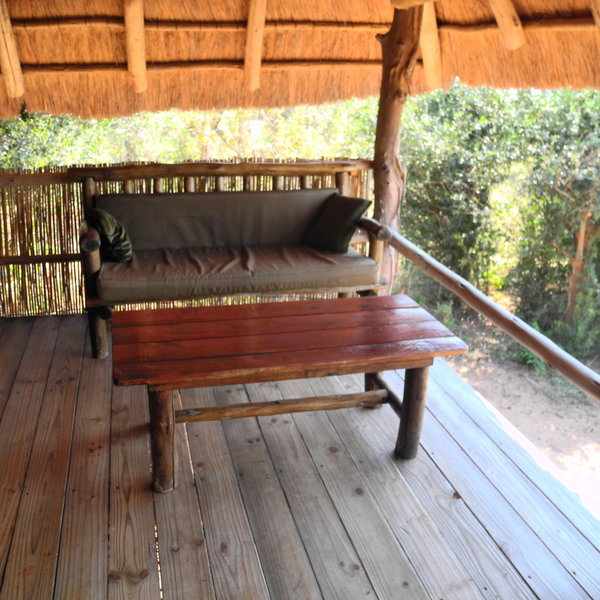
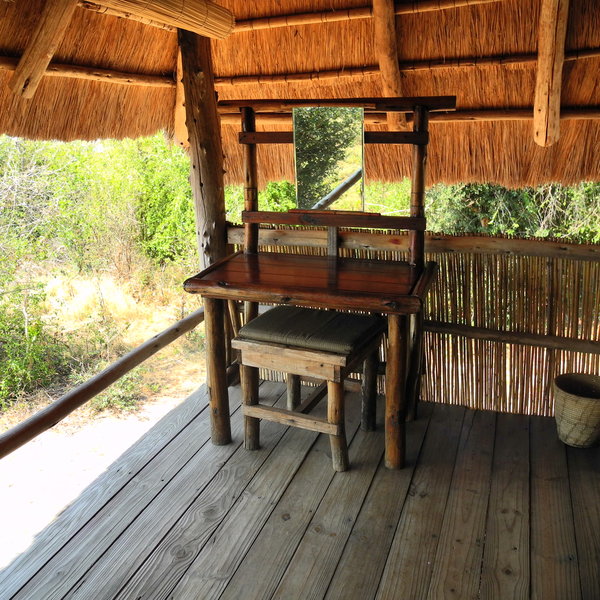
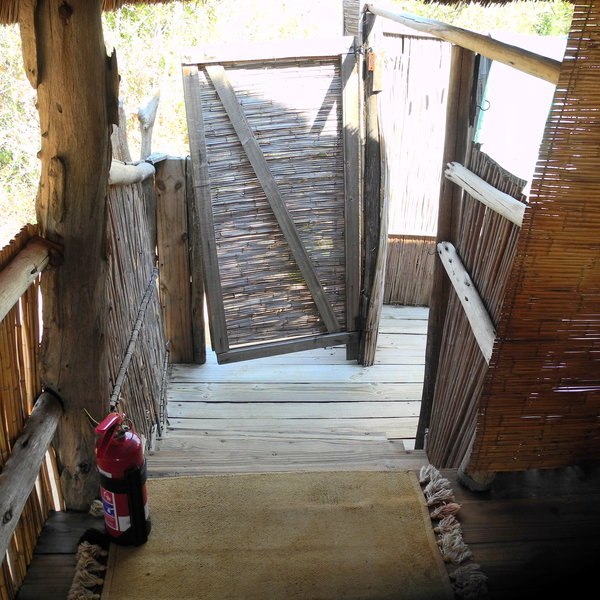
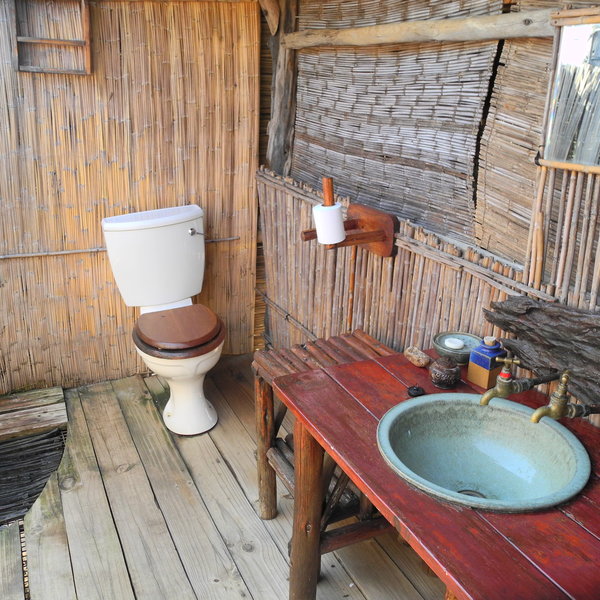
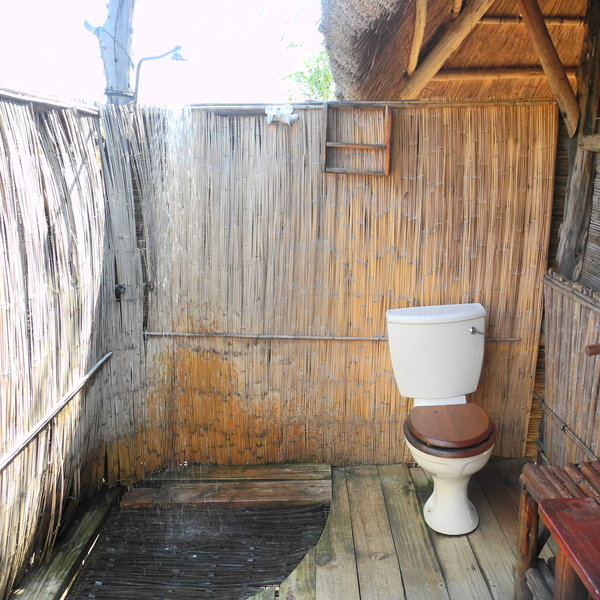
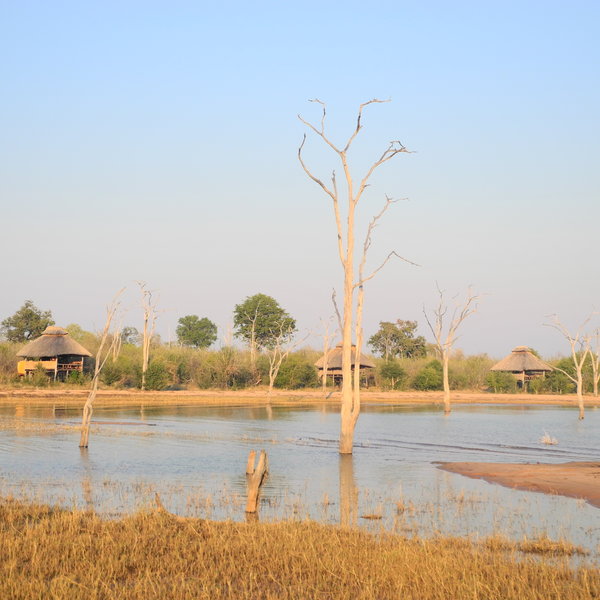
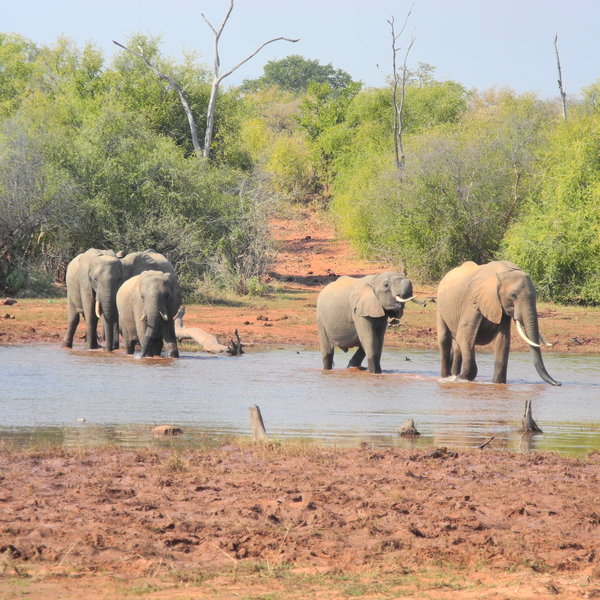
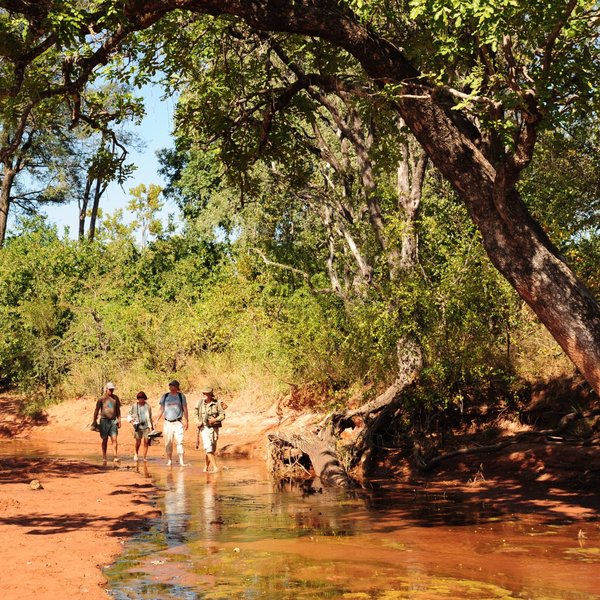
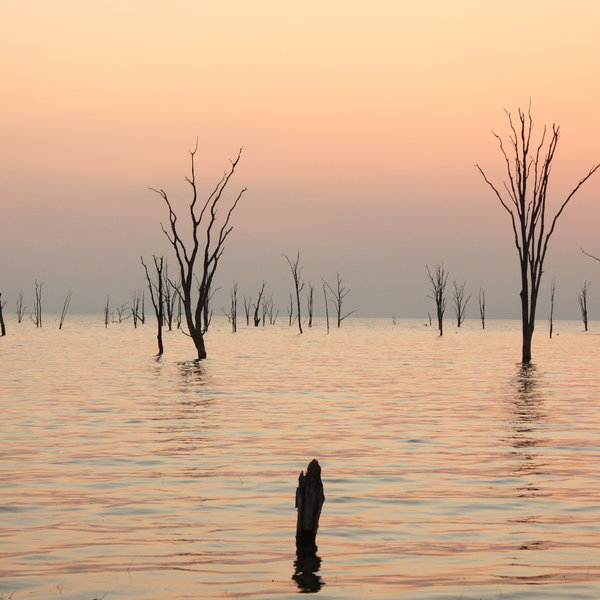
Expert Africa's gallery
When we travel we take lots of photos ourselves to give you a real and un-edited view of the safaris. See our 34 pictures of Rhino Safari Camp to get the candid view.
View galleryRhino Safari Camp: Our full report
Rhino Safari Camp is a rustic property set on Muuyu Island in Zimbabwe’s Matusadona National Park, a stretch ...
... of land that typically becomes a peninsula during times of low water. The camp acts as a base for walks, drives and water-based activities, and provides one of the best locations from which to explore the national park.
Rhino Safari Camp is one of the most simple and rustic camps that we offer in Matusadona, and it has quite a wild feel to it. This was highlighted to us on our most recent visit in October 2016, when we found a spotted bush snake (non-venomous and not harmful to humans) eating a large gecko in front of the main area. However, the camp also has plenty of amenities for a comfortable stay in a bush setting.
The accommodation at Rhino Camp consists of seven rustic A-frame chalets, which are raised on stilts a couple of metres off the ground, both to catch any passing breeze, and to allow for the extremely changeable water level of Lake Kariba. Each spacious chalet is well camouflaged in the bush, and is set slightly back from the island's shoreline.
It's refreshing to come across a camp that has completely done away with canvas walls and mesh windows. Instead, low reed walls nearly reach up to the low-hanging thatched roof, but leaving enough space for open windows to let in the light and the breeze. Simple furnishings include twin beds with great views of the lake and its drowned trees; a comfortable sofa and small coffee table; a reasonably sized wardrobe and a dressing table. In the early evening, large, light-green mosquito nets are rolled down and secured tightly around the beds. After dark, solar lamps and torches provide light in each of the rooms.
On our most recent visit to Rhino Safari Camp, we were woken in the middle of the night by the sound of elephant feeding just outside our chalet. It was great to be able to lie in bed, completely safe, and listen to these giants feeding just a few feet away. The open plan of the chalets at Rhino really enhances experiences like this.
Half a level down from the bedroom is the outdoor bathroom, accessed by a short set of stairs. The bathroom is equipped with a hot and cold running shower, flush toilet, and a small washbasin set in a teak vanity unit.
The wood-and-thatch double-storeyed communal main area at Rhino Safari Camp is also spacious, with great views through the bush towards Lake Kariba. The ground level has a sandy floor and contains the dining area, as well as a large wooden bar on top of which you’ll find a cold-water filter, which provides guests with clean drinking water and cuts down on plastic waste. The upper storey features a comfortable lounge and a tea and coffee station. This area is well designed to catch the breeze, so can be a pleasant spot from which to watch wildlife during the hotter months of the year (October to Novemer).
In front of the main area, closer to the lake shore, is a sandy firepit where drinks are typically enjoyed pre- or post-dinner, as well as a reasonably sized plunge pool, which we found most welcoming in the October heat.
Activities at Rhino Safari Camp include 4WD game drives and walking safaris with the camp’s professional and extremely knowledgeable guides. Such activities are usually offered on both the island and the mainland, though when the land bridge is submerged you may need to take a short boat ride to reach your game-drive vehicle.
Due to the camp’s isolation you are unlikely to have your activities interrupted by vehicles from other lodges. Thanks to this isolation, this part of Matusadona was designated an Intensive Protection Zone (IPZ) to accommodate the relocation and release of black rhino. Unfortunately such protective measures weren’t as successful as hoped, and the population of rhino in the park continued to fall. Although we were lucky enough to track rhino on foot on our visit, this species is now rarely spotted in the park. However, there are still large numbers of elephant, buffalo, hippo and antelope here, and the birdlife can be stunning, making the activities more than worthwhile.
Boat cruises down the lake are also a popular activity, usually for a combination of game viewing, birdwatching and fishing. Sundowners are usually enjoyed on the lake, often accompanied by breathtaking sunsets, with iconic views of submerged trees silhouetted in the foreground.
Ask us who is guiding at Rhino when you're thinking of going; in addition to the camp's usual professional guides, there are sometimes some top-class private guides who guide here for a few months at a time.
Activities
4WD Safari
Birdwatching
Boat trip
Fishing
Guided walking safari
Private activities
Families & children
- Attitude towards children
- Rhino Safari Camp is not suitable for children under the age of 16.
- Property’s age restrictions
- No under 16s
- Special activities & services
- None
- Equipment
- None
- Generally recommended for children
- No
Food & drink
- Usual board basis
- Full Board & Activities
- Food quality
- On visits to Rhino Safari Camp, most recently in October 2016, we have been pleasantly surprised at the high standard of food for such a rustic camp.
An early breakfast is served before heading out for the morning activity. This generally includes a selection of cereals and fresh fruit as well as toast, tea and coffee.
Lunch on return to camp is a more substantial meal. We had homemade burgers with freshly baked buns, bean salad and potato salad, with a chocolate mousse for dessert.
After an afternoon siesta, there's tea and coffee before heading out for the next activity. Then – on return from the activity – drinks are served around the campfire before dinner.
During our visit, the dinner table was laid out under the trees and dinner was enjoyed to the background sound of waves lapping on the shore. We dined on creamed mushrooms on toast, followed by chicken schnitzel with homemade coleslaw, sautéed potatoes and fresh vegetables, and rounded off by a dessert of strawberries, meringues and cream.
Tea and coffee are available in the main area throughout the day. - Dining style
- Group Meals
- Dining locations
- Indoor and Outdoor Dining
- Further dining info, including room service
- Not available
- Drinks included
- Drinks are included, except for premium wines and spirits.
Filtered drinking water is provided in the main area, and jugs of drinking water are provided in the chalets. The tap water is also filtered, and is considered safe for showering and brushing your teeth, but it’s not recommended for drinking.
Getting there
- Location
- Matusadona National Park, Zimbabwe
- Ideal length of stay
- It takes time and effort to reach this fairly remote spot, so we’d recommend that you spend 3-4 nights here.
- Directions
- Guests are transferred to Rhino Safari Camp by speedboat from either Kariba (90 minutes) or Bumi Hills airstrip (30 minutes). Both can be reached with flights from Harare, Mana Pools or Victoria Falls.
- Accessible by
- Fly-and-Transfer
Communications
- Power supply notes
- There is no mains electricity at Rhino Safari Camp, but there is a solar inversion system (220 volts) for charging cellphones, camera batteries etc. A traditional wood-chip 'donkey boiler' is used for heating water for showers, and paraffin lanterns and rechargeable lamps light the rooms at night.
- Communications
- Rhino Safari Camp sometimes has cellphone coverage from operators within both Zimbabwe and Zambia.
As a back-up, the camp is also in communication with Kariba via lake navigation-control radio. - TV & radio
- None
- Water supply
- Other
- Water supply notes
- Water for the lodge is pumped from the lake. The bathrooms are fully plumbed, with flushing toilets.
Health & safety
- Malarial protection recommended
- Yes
- Medical care
- The nearest doctor is in Kariba. Rhino Safari Camp is also linked to MARS (Medical Air Rescue).
- Dangerous animals
- High Risk
- Security measures
- There are no guards on site
- Fire safety
- There are fire extinguishers in all the chalets as well as in the main area.
Useful info
- Disabled access
- Not Possible
- Laundry facilities
- Laundry is included at Rhino Camp, with the exception of women’s underwear, for cultural reasons. Washing powder is provided in the chalets for guests who wish to wash items themselves.
- Money
- There are no safes, and currency exchange is not possible.
- Accepted payment on location
- Any additional payment is accepted in US dollars cash only; credit cards are not accepted.
Plan and book your trip with Expert Africa
All of our trips are tailor-made, so we'll always adapt them to suit you. Talk to an Expert and let us plan and arrange your perfect trip.

Talk to an Expert
Call or email us now! We’ll match you with the Specialist in our team who is best suited to help you. Then together we can start planning your trip.

Set up your itinerary
Based on our experience and your ideas, your specialist will create a detailed, costed itinerary. We’ll refine it together, until we have a trip that you’re perfectly happy with.

Prepare for your trip
The same Specialist will make the seamless arrangements for your trip, send you detailed travel documents, and be available to answer any questions before you depart.

Travel with peace of mind
After you set off, you’ll be cared for by our partners in Africa, most of whom have worked with Expert Africa for decades. And if you ever need us urgently, we’re available 24/7.

When you return
We love to learn about your trip, and so will always be grateful if you’ve the time to give feedback to your Specialist when you return.
Rhino Safari Camp's location
Look closer at the environment and surroundings of Rhino Safari Camp.
Other lodges in Matusadona National Park
Alternative places to stay in this same area.
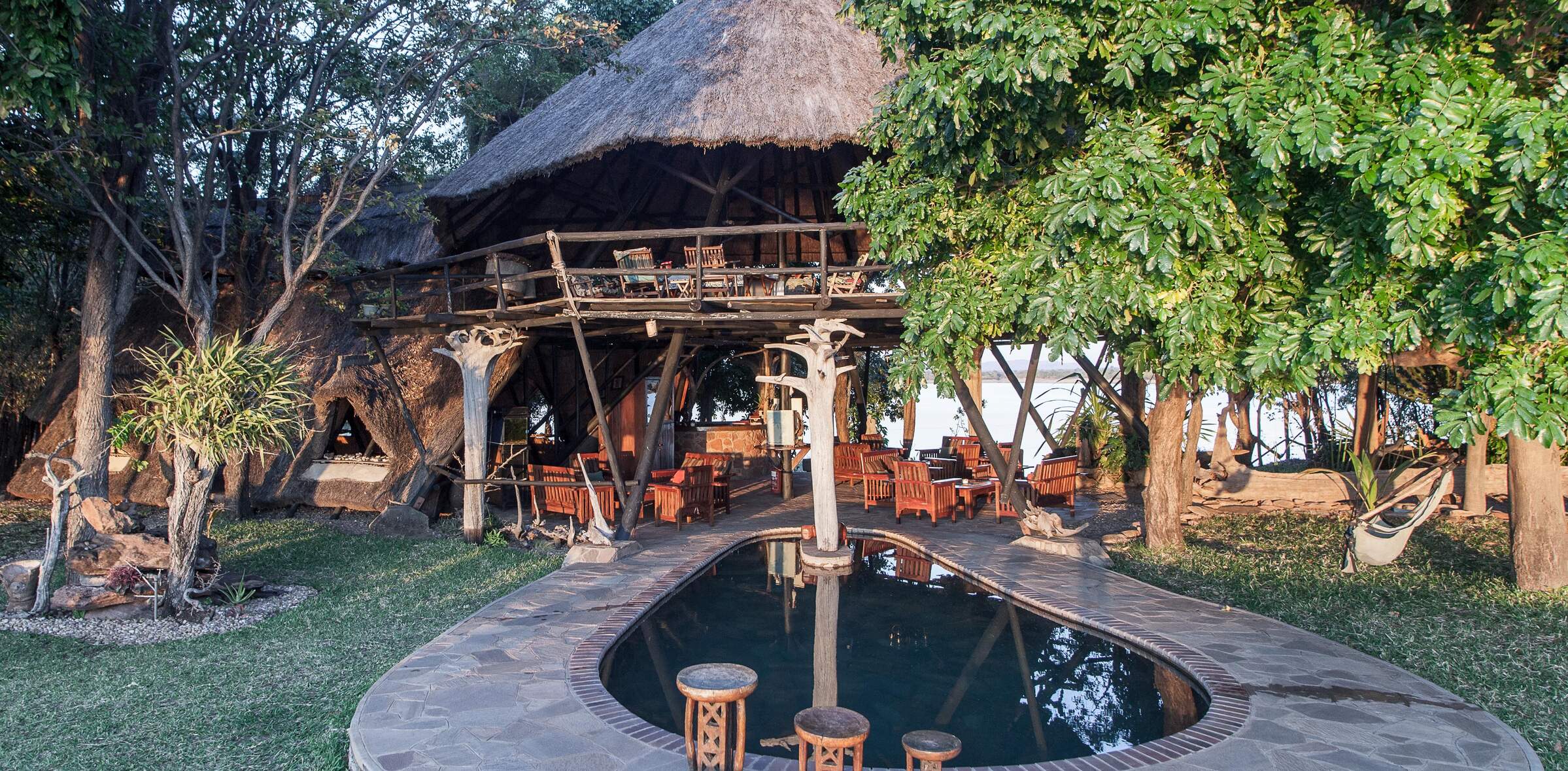
Musango Safari Camp
Set on an island in Lake Kariba, Musango Safari Camp is owned and run by Steve Edwards, a guide of note and an authority on the local area and its wildlife.
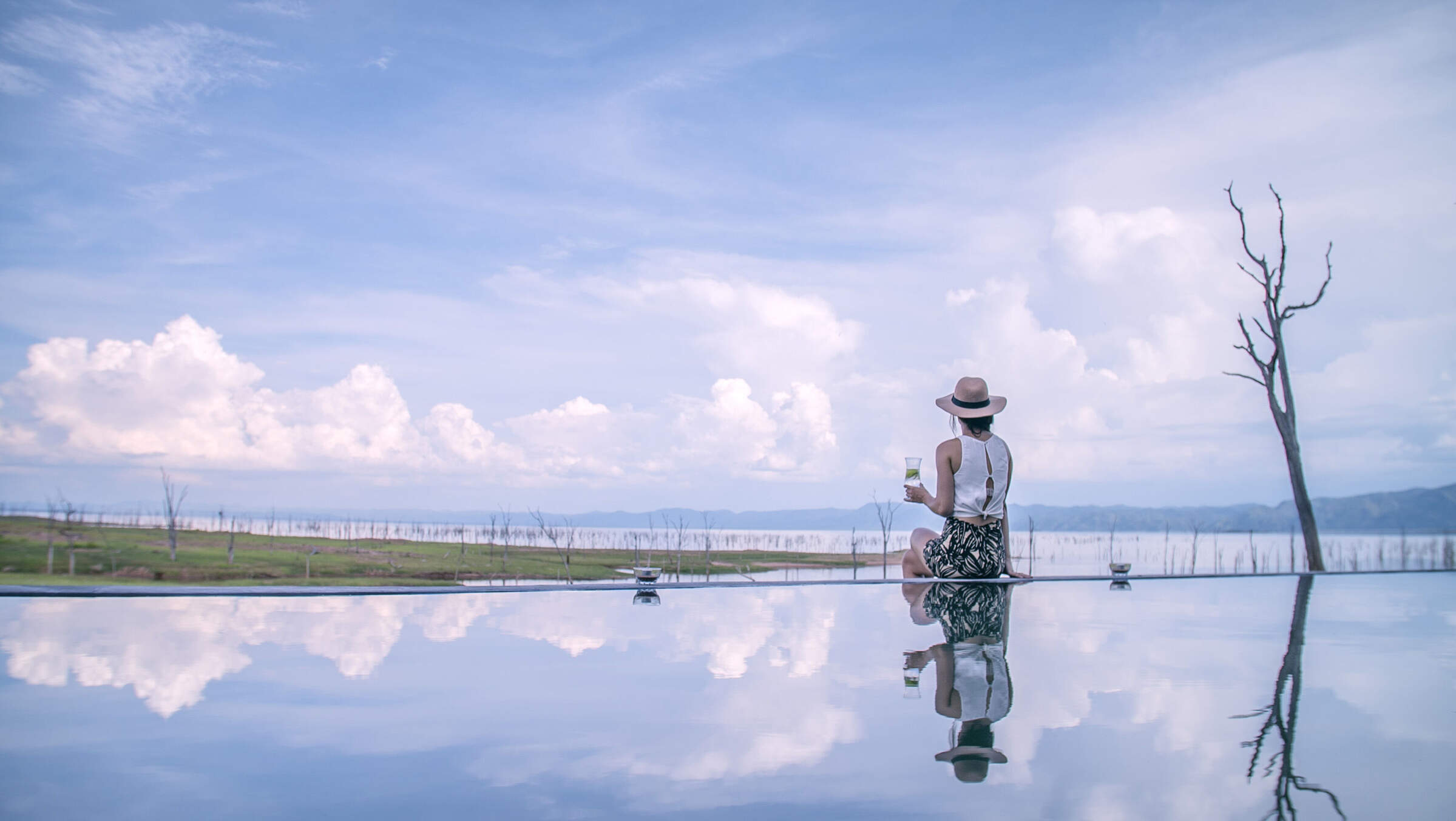
Changa Safari Camp
On Lake Kariba's southern shore the luxurious Changa Safari Lodge offers comfortable accommodation, great guiding & varied activities.
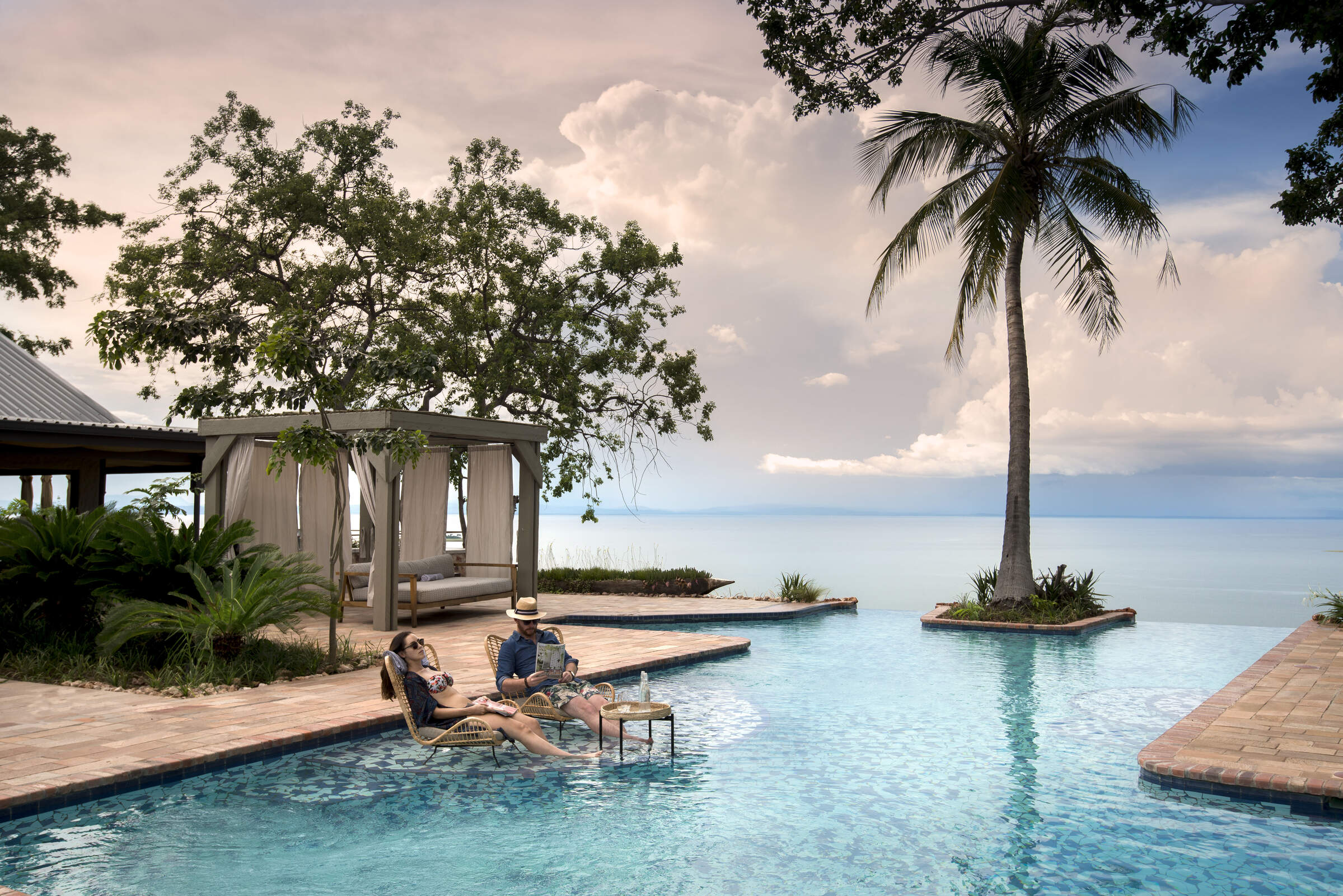
Bumi Hills Safari Lodge
With beautiful views over Lake Kariba, Bumi Hills Safari Lodge is a place to relax, although there are also plenty of activities on offer.
When to go to Matusadona National Park
Our month by month guide: What it's like to visit Rhino Safari Camp in Matusadona National Park
Jan
Feb
Mar
Apr
May
Jun
Jul
Aug
Sep
Oct
Nov
Dec
Zimbabwe in January
January falls in the middle of Zimbabwe’s rainy season and is the wettest month of the year. Heavy rainfall occurs most days, flooding seasonal rivers and waterholes, with the occasional sunny spell.
With the high levels of precipitation the wildlife in the national parks becomes widely dispersed, taking advantage of the abundance of food and water, and is easily hidden by the thick, green bush.
While sightings of larger animals are possible, and many species drop their young at this time, game viewing is often sparse. However, many migratory species of bird arrive in Zimbabwe making it a peak month for birding.
The rains create incredibly sticky mud in Mana Pools National Park, preventing access and causing camps to close for the season. The majority of the camps in other parks remain open, with low rates attracting a smattering of visitors.
- Peak of the rainy season: hot & humid with heavy rain most days
- Bush exceptionally thick and green, with poor game viewing
- Species such as impala drop their young
- All camps in Mana Pools closed
- Very few visitors, and low rates at open camps
Our view
A time to avoid if possible
Weather in January
Zimbabwe in February
February remains well within Zimbabwe’s rainy season. Although total rainfall drops, relatively short thunderstorms can still be expected most afternoons. On the plus side, there is a greater chance of some sunshine in-between.
Much of the country remains waterlogged, closing access to Mana Pools and severely restricting walking safaris in other parks. While game drives and canoeing remain an option, the abundance of water disperses animals, and thick grass can make it difficult to spot larger species, but birding remains excellent. Conversely, this is a great time of year to view the landscape, and is excellent for photographers. Sporadic cloud cover and clear air can make for some spectacular sunsets too, particularly over Lake Kariba and the Zambezi River where the reflections off the water add to the beauty.
- Generally wet with frequent thunderstorms & hot humid days
- Poor wildlife viewing due to dispersed animals & thick bush
- Clear air, green landscapes & exceptional sunsets
- All camps in Mana Pools closed
- Very few visitors & low rates at camps that are open
Our view
This is not a great time to visit
Weather in February
Zimbabwe in March
March is the final month of Zimbabwe’s rainy season, when the rains start to trail off and sunny days become the norm. However, some days the clouds can still build, breaking into thunderstorms in the afternoon.
Mana Pools remains closed throughout the month but the majority of camps in Hwange, Matusadona and Gonarezhou remain open. Here, the landscape is green and alive, with migrant species of birds taking advantage of the abundant insect life. Larger animals remain elusive though, and walking safaris remain restricted.
By this time of year, the rains have normally trickled down to the Zambezi River and the flow of water over the Victoria Falls starts to increase, but without kicking up too much spray to obscure the views.
- Last month of the rainy season: hot, humid days with occasional storms
- Lush vegetation means good birding, but poor game viewing
- Views of the Victoria Falls improve
- All camps in Mana Pools closed
- Open camps have few visitors & low rates
Our view
This is not a great time to visit
Weather in March
Zimbabwe in April
April marks the end of Zimbabwe’s rainy season and the end of summer. Clear skies are the norm, with just the occasional shower. Temperatures start to drop, failing to reach 30ºC most days and dropping down to around 10ºC at night.
As the rain fades the landscape starts to dry out. While the vegetation remains thick and green, the soil in Mana Pools dries enough for camps to open, and the only camps to remain closed are the most remote bushcamps in Hwange. Although viewing of larger animals remains tricky, the improved weather starts to draw back visitors, as do prices significantly below those in the peak season.
The Zambezi River and flow of water over the Victoria Falls is at its highest, although large amounts of spray diminish views of the waterfall itself.
- Transitional period, with much lower rainfall & falling temperatures
- Wildlife is still dispersed & hard to see, but sightings improving
- Views of the Victoria Falls often obscured by spray
- Camps in Mana Pools open
- Visitors start to return & camps increase their rates
Our view
A good time to visit, with pros & cons
Weather in April
Zimbabwe in May
The first month in the dry season, May is also Zimbabwe’s first month of winter. If the rains are particularly late in a given year, you may catch the odd shower, but you can expect clear and sunny days the majority of the time. While it’s warm in the daytime, temperatures drop to single digits at night, so bring a warm jumper and gloves for early morning drives.
With the rain having cleared the air, the sky is bright blue, and it’s the best time of year for photography.
Even the most remote camps in Zimbabwe are now open. With the lack of rainfall, vegetation dies back significantly, and seasonal rivers return to sand. Not only does this open up the possibility of walking safaris, but wildlife viewing becomes much more reliable.
- Start of the dry season, with milder days and cold nights
- Game viewing significantly improves as vegetation dies back
- Vegetation starts to turn from green to brown
- Best time for photography with crystal clear air
- Visitors start to return; all camps open & rates increasing
Our view
A very good time to visit
Weather in May
Zimbabwe in June
During June you can virtually be guaranteed of dry and sunny days, although temperatures continue to drop, and can get close to freezing at night in Hwange National Park. Jumpers, jackets and gloves are strongly recommended for early mornings and evenings.
The opportunities for wildlife viewing improve throughout the month as the landscape rapidly dries, and the animals start to gather on the banks of the Zambezi River and around Hwange’s waterholes.
Water levels in the Zambezi River start to drop, reducing the amount of spray kicked up at the Victoria Falls and greatly improving visibility, but still allowing a full curtain of water to cascade over the edge.
- Middle of winter, with night-time temperatures close to freezing
- Game viewing significantly improves throughout the month
- Views of the Victoria Falls are at their best
- Noticeable increase in visitor numbers
- Camps considerably more expensive
Our view
A very good time to visit
Weather in June
Zimbabwe in July
July sits in the middle of Zimbabwe’s dry season. Although it’s warm at midday, temperatures are generally cold and in Hwange it’s been known to drop below freezing at night, with the lower-altitude Mana Pools feeling a bit warmer.
With wildlife clustering around the few remaining waterholes, sparse vegetation, and some of the best views of the Victoria Falls, this is one of the most popular times to travel, with camps charging peak season rates to reflect this. That said, visitor numbers to the country in general remain low, and outside of the Victoria Falls it’s rare for any areas to feel crowded.
- Middle of the dry season with almost no chance of rain
- Clear sunny days, but very cold nights
- Wildlife viewing good; game drives and walking safaris unrestricted
- Views of the Victoria Falls at their best
- Camps charging peak season rates
Our view
A very good time to visit
Weather in July
Zimbabwe in August
While August is the end of winter and temperatures are starting to creep up, mornings and nights are still cold, and game drives in open vehicles can feel particularly chilly. Well into the dry season, the landscapes will have mostly transformed from green to brown and wildlife viewing in Zimbabwe’s national parks is approaching its best. Due to dust kicked up into the atmosphere and smoke from bush fires you may start to notice a haze on the horizon, but this doesn’t significantly impact photography.
August is one of the most expensive months, and the pleasant weather and decent game viewing attracts lots of visitors. While the national parks rarely feel crowded, Victoria Falls accommodation can sell out a year in advance.
- Warm, sunny days but cold mornings & nights; almost no chance of rain
- Wildlife viewing nearly at its best
- Landscape turns brown, & an atmospheric haze develops
- All camps charging peak season rates
Our view
Fantastic: the very best time to visit
Weather in August
Zimbabwe in September
Temperatures in September rarely drop below 15ºC, but are yet to reach the oppressive highs of summer. It will normally have been five months since the last drop of rain, so antelope and elephants cluster around whatever water remains, with predators never too far away.
The landscape is very brown, and the haze building on the horizon takes some of the colour out of the sky, so while animal subjects are plentiful, the background is not ideal for photography.
The combination of incredible wildlife viewing, hot and sunny weather, and cheaper flights outside of the school holidays make this the most popular time of year to travel, and availability at the camps can become limited up to a year in advance.
- The best month for weather, with a pleasantly warm temperature range
- One of the best months for game viewing
- Victoria Falls starting to dry but still impressive on Zimbabwean side
- All camps are charging peak season rates
- Most popular time to travel, & space can be limited
Our view
Fantastic: the very best time to visit
Weather in September
Zimbabwe in October
October is the last month of the dry season with little chance of rain but building humidity. While the higher elevation of Hwange National Park limits temperatures to the 30s Celsius, they can easily top 40ºC in Mana Pools.
With little vegetation or water, wildlife is drawn to the few remaining water sources and viewing is at its best; visitors who brave the heat can be rewarded with some exceptional sightings, although haze in the air diminishes photos. Maximum visibility and dense wildlife concentrations can also make for very rewarding walking safaris, although the heat can make them uncomfortable.
Water levels in the Zambezi at the Victoria Falls drop significantly, and large stretches of the waterfall are a dry cliff-face – although it never dries completely. Camp rates remain at their peak, but visitor numbers drop as people avoid the heat.
- Last month of the dry season; very hot with building humidity
- Wildlife viewing at its very best
- Dust & smoke in the air diminish photographic opportunities
- Victoria Falls starting to look very dry
- Camp rates remain at their peak
Our view
A very good time to visit
Weather in October
Zimbabwe in November
November is a transitionary period, with high temperatures and humidity. While they can’t be predicted with any precision, the first rains normally arrive halfway through the month, in the form of thunderstorms lasting a few hours each day.
Early November is a popular time to travel as the camps drop their rates, so if you’re lucky you can get peak-season game viewing at low-season rates. This is a gamble though as if the rains do arrive, animals are no longer limited to a few dangerous waterholes and will disperse into the bush. While all the camps in Mana Pools intend to remain open, the rains can make the airstrips unusable so you may find yourself moved to a different park, a risk that increases through the month.
- Typically the start of the rains in Zimbabwe
- Temperatures & humidity levels remain high
- Wildlife viewing rapidly diminishes as the rains arrive
- Camps remain open, but risk early closure in Mana Pools
- Much cheaper time to travel as camps drop their rates
Our view
A good time to visit, with pros & cons
Weather in November
Zimbabwe in December
By December the rainy season has begun in earnest; this is one of the wettest months in Zimbabwe, with heavy thunderstorms most afternoons and occasionally continuous rain for a couple of days. While temperatures start to cool down the high levels of humidity can make the heat feel more oppressive.
With the rains comes an explosion of green growth, and the dust and smoke are washed out of the air. The resulting scenery – with the occasional bright blue skies – can be fantastic for photographers. Thick vegetation and plentiful water makes viewing of larger animals tricky, but with migratory species arriving the birding is at its best.
All camps in Mana Pools and the remote Hwange camps close, with those remaining open charging their lowest rates.
- One of the wettest months in Zimbabwe
- High temperatures & levels of humidity
- Wildlife viewing poor, but birding good
- Lush green landscapes & clear air; great for landscape photography
- All camps in Mana Pools closed
Our view
This is not a great time to visit
Weather in December

Looking for inspiration on where to travel next?
Visit our trip chooser to explore your options and find inspiration for your perfect African adventure
Inspire me